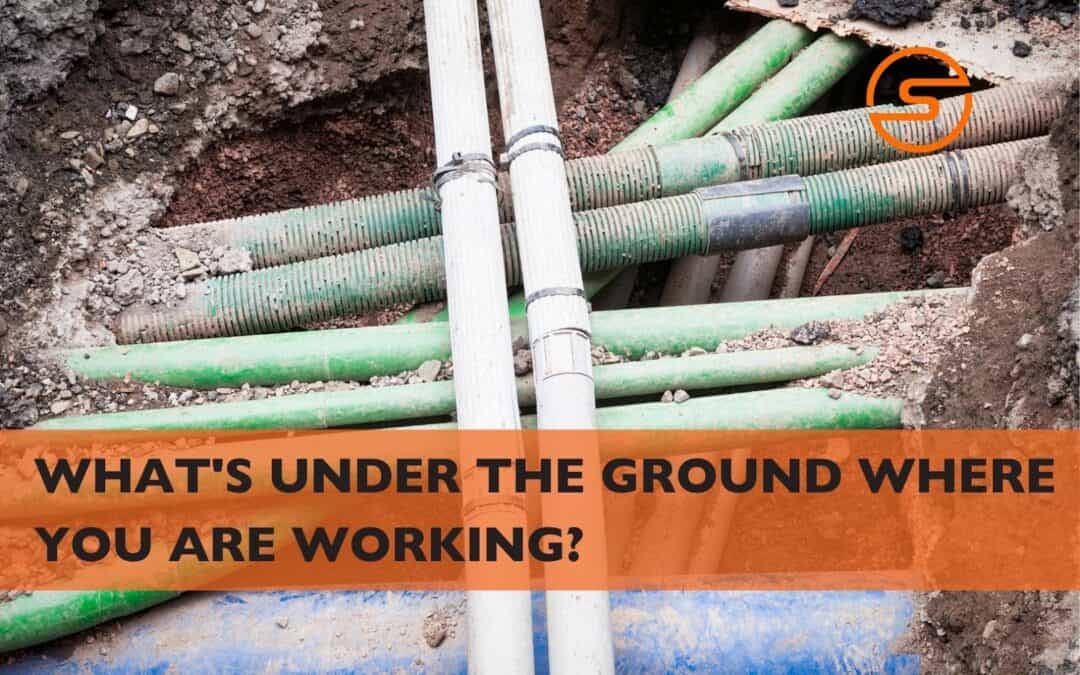Almost every construction project requires digging, whether you are building a single-family home or undertaking a major highway expansion project. Today, a lot of construction projects are in-fill projects, meaning that they are carried out on land that was developed at one time, or that is surrounded by development. When development occurs on in-fill parcels, utilities are probably buried somewhere on the plot. These utilities can be anything from water conduits and power lines to cable TV lines, telephone wires, natural gas lines, sewer lines, or internet cables. So, when you plan to dig, you need to know what is under the ground before you begin.
Identify All Utility Lines First
For any earth-moving project, the first step should always be to identify where utility lines are located. Utility companies can be contacted through a universal number, 811, by which you schedule someone to come out to the property and mark all the utility easements. The worker will mark the underground pathways on the ground with color-coded spray paint or color-coded flags. This is necessary for safety: the last thing you want is to dig into and burst a water, sewer, gas, or power line, and bring down not only your own project but likely impact all the property owners in the vicinity.
But even when you follow these safety protocols, accidents can still happen. Sometimes the companies that installed the lines did not follow the route of the easement. This may be because the person marking the pathways made a mistake, or because there are additional lines that were added in later by the property owner or by someone else who did not bother to inform the right parties. When that happens, digging can cause serious problems.
How Can a PVD Help?
While OSHA guidelines on trenching and excavation safety require workers to identify utility lines before any excavation work, even OSHA recognizes that identifying the exact location of utility lines may require more careful detection even when easements are marked by paint or flags.
That’s where a Personal Voltage Detector, or PVD, can be critical. Unlike most PVDs, Safeguard’s COMPASS PVD can detect both voltage and electrical current, and can even do so if the current is strong enough in a cable that is buried underground. A worker with a PVD may be able to detect whether an electric or magnetic field is in close proximity. Consequently, the worker can more accurately map energized lines before any excavation work is done, or even after excavation work has started, but lines are not where they are expected to be.
The COMPASS PVD provides an added layer of protection from electrocution, shock injuries, or burns for your crew if a backhoe hits and damages any energized cables. Using PVDs can also protect your project: if you hit a line, you cause delays in your project, incur costs to fix the damage, and potentially face liability. Using a PVD is an affordable, effective, and simple way to remove the unknowns from your jobsite, providing your crew with a safer work environment.
What To Expect From Your COMPASS PVD
At Safeguard, we’ve designed two different voltage detectors: the COMPASS PVD and the COMPASS LV (Low Voltage). These detectors are the perfect solution for those working in environments where energized lines are present, even when obscured by non-ferrous materials, such as dirt. While these detectors don’t replace standard safety protocols, they enhance worker safety at an excavation site.
These devices are easily mounted to a standard hardhat, giving the user hands-free operation while still providing line-of-site utility. They emit both visual and audio signals when it detects an energized line and provides directional information to help workers steer clear of harm. The COMPASS has a 360° range of detection, and seven different sensitivity settings. It is robust and reliable, offering up to 80 hours of service on one 1.5-hour charge, and can operate in any weather.
Anytime you work with electricity, there is the risk of harm to your personnel. No matter how many safety precautions you take, you cannot take enough. The COMPASS PVD gives your crew members a “sixth sense” to detect energized lines, allowing them to focus on getting their jobs done without the additional anxiety that comes from worrying about whether they will hit an underground power line. Contact us today at Safeguard to learn more about our products and to get a demonstration of how PVDs keep your workers safe.

